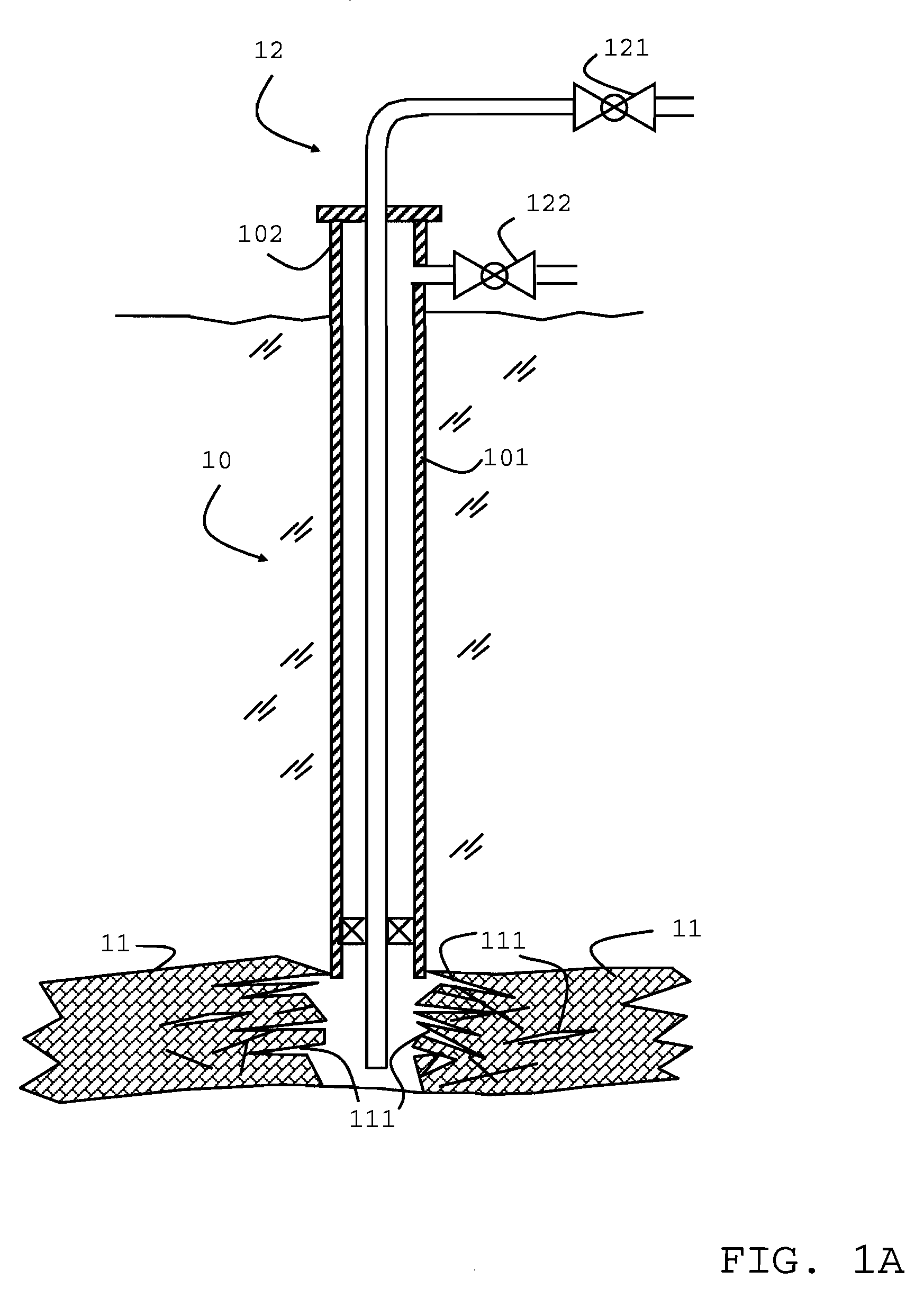Method of fracturing a coalbed gas reservoir
a gas reservoir and coalbed technology, applied in the field of coalbed methane, can solve the problems of reducing the wellbore skin effect, dislodging coal chips, and reducing the efficiency of fracturing fluid during the fracturing process, and achieve the effect of improving the efficiency of fracturing fluid
- Summary
- Abstract
- Description
- Claims
- Application Information
AI Technical Summary
Benefits of technology
Problems solved by technology
Method used
Image
Examples
Embodiment Construction
[0043]The invention proposes a pre-fracturing treatment of a well in one or more subterranean coal seams. Prior to the fracturing a fluid is injected below or at fracturing rates and pressures. The fluid is designed to swell the coal and prevent fracturing fluid leak-off into the cleat network of the coal seam. This has the dual effect of protecting the cleats against damaging fracturing fluids, and, more importantly, improving the efficiency of the fracture propagation process so longer hydraulic fractures result.
[0044]A more complete listing of the steps of a method in accordance with an example of the invention are shown in the stages as shown in FIG. 1 and the flow chart of FIG. 2 and are listed together with possible variants and alternatives in the following.
[0045]FIG. 1A shows a well 10 drilled into a coal seam 11. The well is shown with a casing 101, but the invention equally applies to uncased or open wells. Surface flow control equipment 12 includes injection tubing 120 an...
PUM
 Login to View More
Login to View More Abstract
Description
Claims
Application Information
 Login to View More
Login to View More - R&D
- Intellectual Property
- Life Sciences
- Materials
- Tech Scout
- Unparalleled Data Quality
- Higher Quality Content
- 60% Fewer Hallucinations
Browse by: Latest US Patents, China's latest patents, Technical Efficacy Thesaurus, Application Domain, Technology Topic, Popular Technical Reports.
© 2025 PatSnap. All rights reserved.Legal|Privacy policy|Modern Slavery Act Transparency Statement|Sitemap|About US| Contact US: help@patsnap.com



